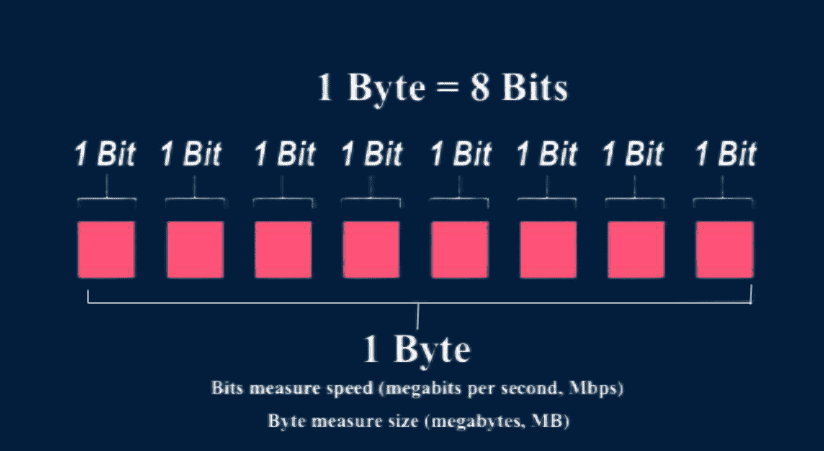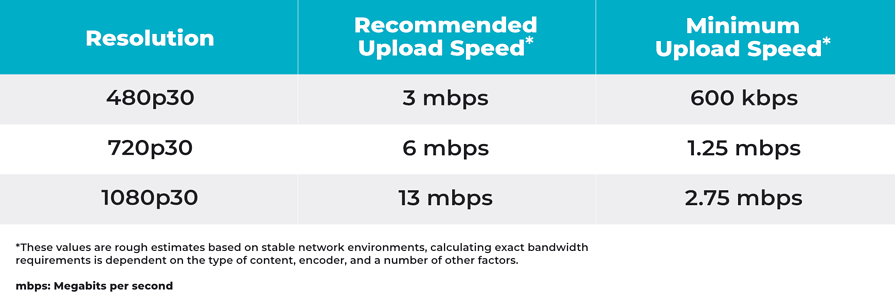A Comprehensive Overview to Measuring Megabits Per Second for Home Usage
A Comprehensive Overview to Measuring Megabits Per Second for Home Usage
Blog Article
Exactly How Megabits Per Second Effect Your Online Tasks
The concept of megabits per second (Mbps) plays an essential role in forming our on the internet experiences. Greater Mbps can improve efficiency and minimize disturbances, while insufficient rates may promote stress and inadequacy.
Recognizing Megabits Per Second
When taking into consideration web rate, it's necessary to understand the concept of megabits per second (Mbps), which works as a common measurement for information transfer prices. This metric measures just how much information can be sent over a web link in one second, offering a clear understanding of efficiency capacities - Megabits Per Second. For context, one megabit is equal to one million bits, and Mbps is frequently used to reveal transmission capacity for various on-line tasks
A higher Mbps suggests a much faster internet connection, allowing individuals to execute tasks such as downloading data, surfing sites, and taking part in on-line video gaming extra successfully. For example, common surfing calls for around 1-5 Mbps, while streaming high-def video clip might require 5-25 Mbps. Recognizing these needs is essential for figuring out the ideal net rate needed for details tasks.
In addition, the variety of tools attached to a network can impact overall performance. Several customers streaming, pc gaming, or downloading and install all at once can stress readily available transmission capacity, causing slower rates - Megabits Per Second. Reviewing individual online behaviors and needs is crucial in choosing a net strategy that aligns with one's needs, guaranteeing a seamless digital experience
Streaming and Buffering Issues
Streaming high-def web content has actually come to be a staple of modern on-line entertainment, yet it is usually come with by discouraging buffering concerns. These disruptions can substantially interfere with the viewing experience, resulting in discontentment and prospective loss of audience involvement. Buffering happens when the data sent from the streaming service is not gotten quickly sufficient to preserve a smooth playback, frequently as a result of inadequate internet rate measured in megabits per second (Mbps)

Additionally, real-time streaming can be impacted by network congestion, which occurs when multiple tools share the very same data transfer. Enhancing connection rate and guaranteeing sufficient Mbps is vital for a seamless streaming experience. As streaming solutions remain to evolve, recognizing the effect of Mbps on buffering issues remains critical for customers seeking nonstop enjoyment.
Online Gaming Efficiency
The impact of internet rate on online tasks extends past streaming, considerably affecting on the internet gaming efficiency. In competitive pc gaming, low latency and high transmission capacity are essential for a smooth experience. A fast link reduces lag, permitting players to respond swiftly to in-game events, which can be the distinction between triumph and defeat.
Transmission capacity, measured in megabits per second (Mbps), plays an essential function in sustaining multiple gadgets and gaming platforms simultaneously. Insufficient transmission capacity can lead to dropped links or reduced video game top quality, negatively impacting gameplay. As an example, online multiplayer games need substantial information transfer, specifically during peak gaming hours when many gamers are online.
Hectic first-person shooters demand greater speeds to keep responsiveness, while turn-based approach video games may function moderately well on reduced speeds. As online gaming continues to progress, with enhancing graphical integrity and even more complex multiplayer settings, the need for higher Mbps will just escalate.
Video Clip Conferencing Quality
In today's electronic landscape, video conferencing top quality is greatly influenced by net browse around this site speed, particularly in regards to bandwidth and latency. Top notch video clip calls require enough data transfer to transmit sound and video information perfectly. Usually, a minimum of 1.5 Mbps upload and download speeds is advised for basic interpretation video, while high-def video conferencing usually requires at the very least 3 Mbps.
Latency, or the delay between sending out and getting information, also plays an essential role in the individual experience. Greater latency can lead to resemble, lag, and disjointed communications, which can impede cooperation and engagement during meetings.
In addition, numerous participants in a video seminar can strain offered data transfer, demanding also greater rates. Network congestion, frequently brought on by simultaneous activities like streaming or downloading, can even more break down video clip top quality. Hence, for companies depending on video clip conferencing for remote cooperation, recognizing the partnership in between megabits per second and total communication high quality is necessary for keeping efficiency and improving online communications.
Selecting the Right Net Plan
Picking an ideal net strategy is vital for making certain optimum efficiency Get the facts in various online tasks, specifically in setups that demand high bandwidth, such as video conferencing and online pc gaming. Megabits Per Second. When considering an internet plan, it is vital to review both the rate and data allowance to match your details use requirements
For houses with numerous individuals participating in simultaneous activities, a strategy using higher megabits per second (Mbps) is suggested. Normally, a minimum of 25 Mbps is appropriate for typical streaming and browsing, while strategies surpassing 100 Mbps are preferable for even more intensive jobs. In addition, think about the nature of your online activities; video clip conferencing requires a minimum of 1.5 Mbps publish speed, while on the internet gaming might need a reduced latency however regular connection.
It is also essential to analyze your information cap. Unlimited information plans can stop throttling and disruptions, specifically if hefty usage is anticipated. Research service carriers in your area, as schedule and pricing can vary. By attentively choosing an internet plan customized to your requirements, you can improve your on-line experience, guaranteeing smooth, nonstop access to your preferred tasks.
Verdict
In verdict, the relevance of megabits per second (Mbps) in shaping online tasks can not be overemphasized. A complete understanding of specific or family Mbps requirements is necessary for selecting a suitable internet plan that sufficiently supports diverse online tasks and user demands.

Normally, a minimum of 25 Mbps is suitable for typical streaming and browsing, while plans surpassing 100 Mbps are preferable for even more extensive jobs. In addition, think about the nature of your online activities; video conferencing needs at least 1.5 Mbps upload rate, while on the internet video gaming might require a reduced latency however constant connection.
Report this page